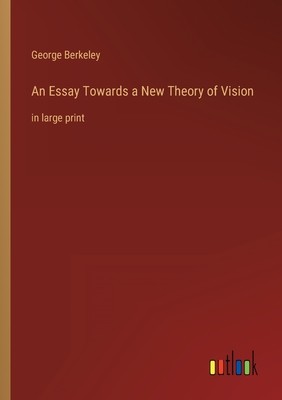
- We will send in 10–14 business days.
- Author: George Berkeley
- Publisher: Outlook Verlag
- ISBN-10: 3368334948
- ISBN-13: 9783368334949
- Format: 14.8 x 21 x 0.8 cm, minkšti viršeliai
- Language: English
- SAVE -10% with code: EXTRA
Reviews
Description
George Berkeley also known as Bishop Berkeley was an 18th century philosopher. His theory of ?immaterialism was later referred to as subjective idealism. This theory, summed up in his dictum, "Esse est percipi," which states that individuals can only directly know sensation and ideas of objects not abstractions such as matter. Berkeley wrote A Treatise Concerning the Principles of Human Knowledge (1710) and Three Dialogues between Hylas and Philonous (1713). Berkeley used the characters of Philonous and Hylas to represent himself and John Locke. Berkeley begins A Essay Towards a New Theory of Vision by stating ?My design is to show the manner wherein we perceive by sight the distance, magnitude, and situation of OBJECTS. Also to consider the difference there is betwixt the IDEAS of sight and touch, and whether there be any IDEA common to both senses.?
EXTRA 10 % discount with code: EXTRA
The promotion ends in 23d.11:55:31
The discount code is valid when purchasing from 10 €. Discounts do not stack.
- Author: George Berkeley
- Publisher: Outlook Verlag
- ISBN-10: 3368334948
- ISBN-13: 9783368334949
- Format: 14.8 x 21 x 0.8 cm, minkšti viršeliai
- Language: English English
George Berkeley also known as Bishop Berkeley was an 18th century philosopher. His theory of ?immaterialism was later referred to as subjective idealism. This theory, summed up in his dictum, "Esse est percipi," which states that individuals can only directly know sensation and ideas of objects not abstractions such as matter. Berkeley wrote A Treatise Concerning the Principles of Human Knowledge (1710) and Three Dialogues between Hylas and Philonous (1713). Berkeley used the characters of Philonous and Hylas to represent himself and John Locke. Berkeley begins A Essay Towards a New Theory of Vision by stating ?My design is to show the manner wherein we perceive by sight the distance, magnitude, and situation of OBJECTS. Also to consider the difference there is betwixt the IDEAS of sight and touch, and whether there be any IDEA common to both senses.?


Reviews